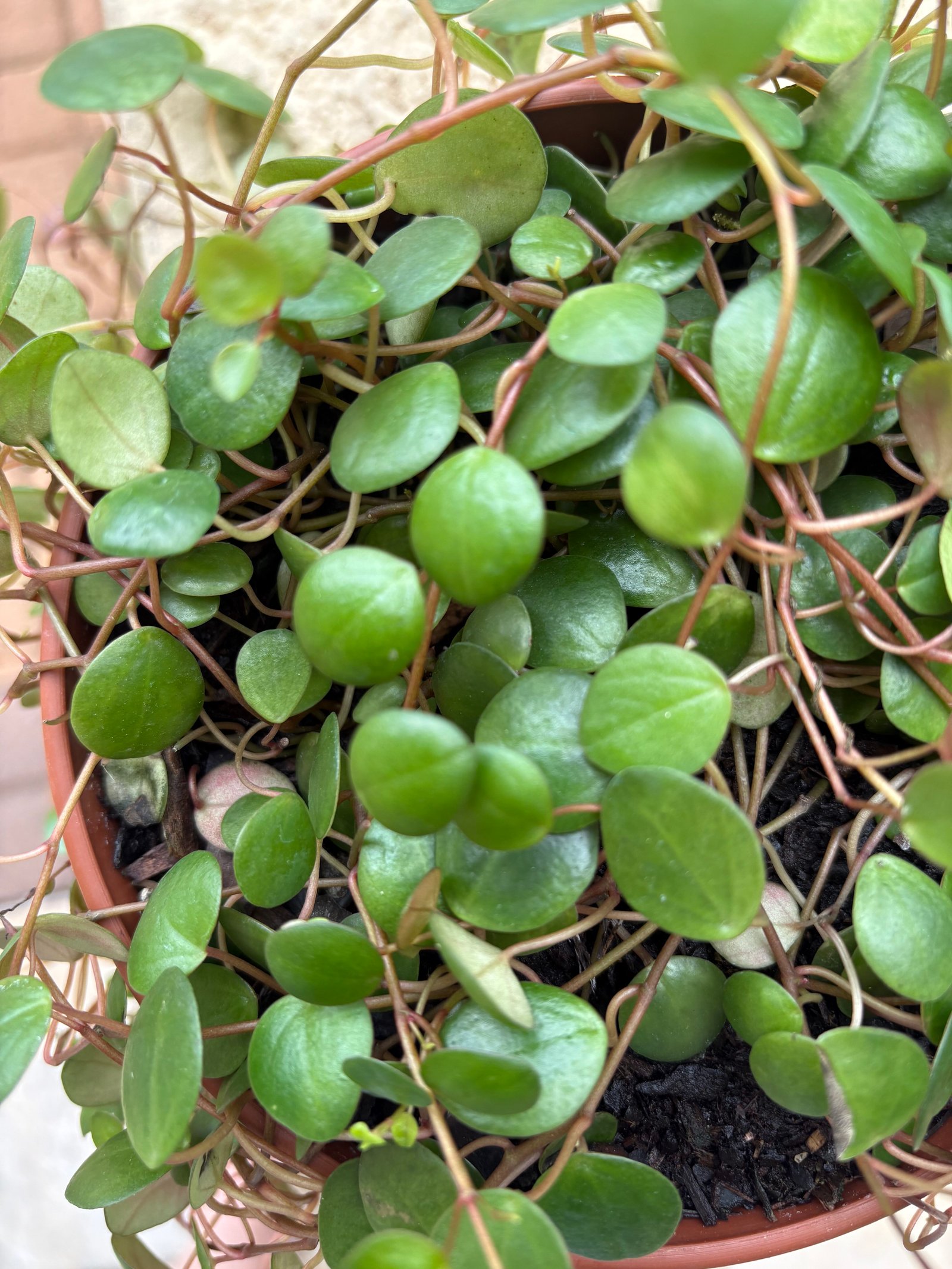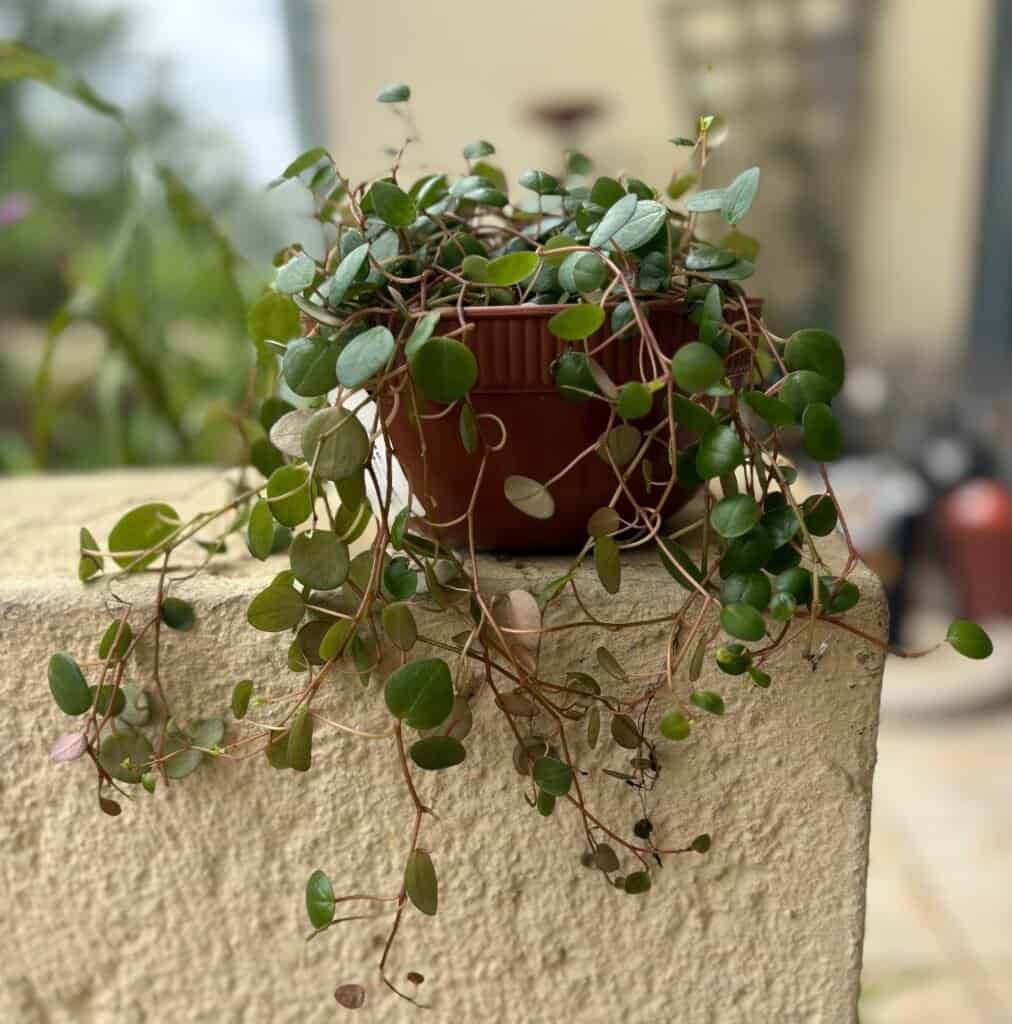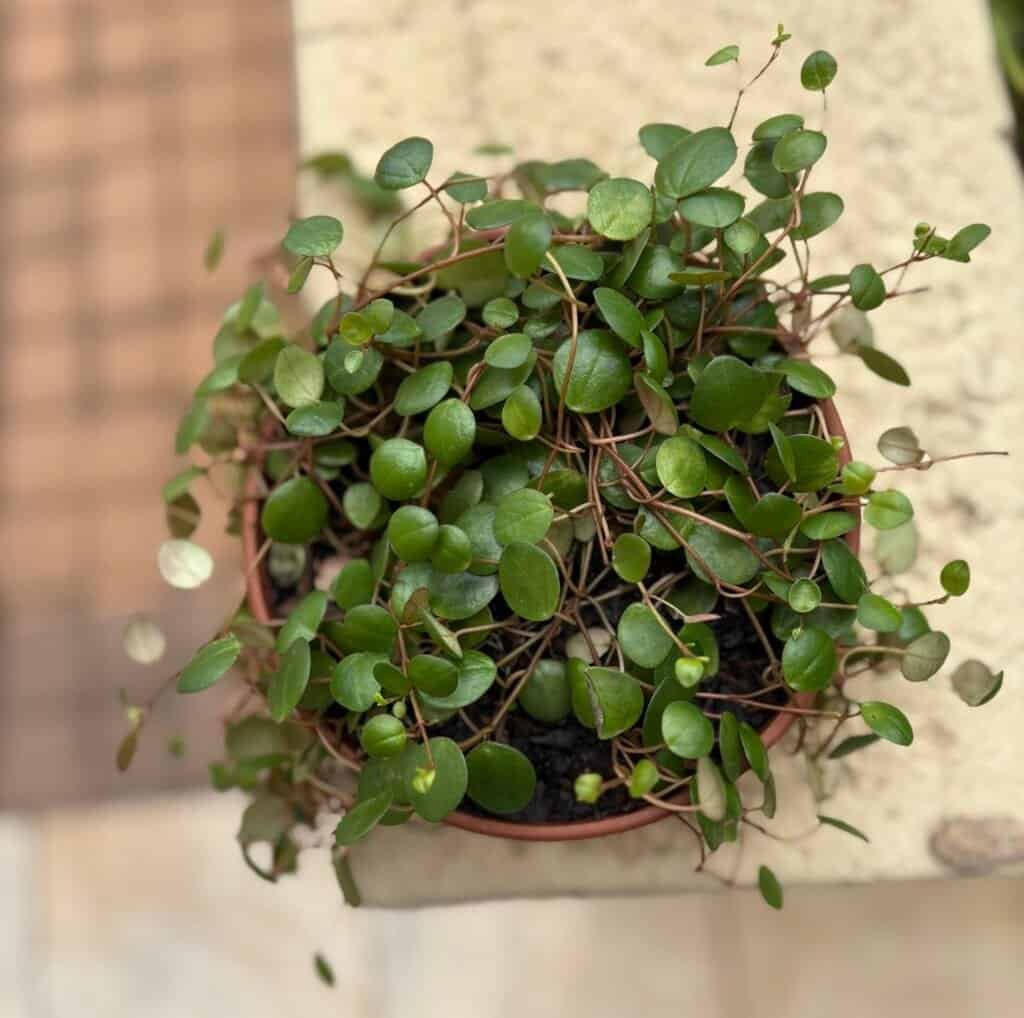

1. Overview
Common Name(s): Pepperspot Peperomia
Scientific Name: Peperomia ‘Pepperspot’
USDA Hardiness Zones: 10–12 (indoor plant in cooler zones)
Native Range: Central and South America
Brief Description:
The Peperomia ‘Pepperspot’ is a trailing houseplant with small, round, glossy leaves and reddish-brown stems. Its compact, cascading growth habit makes it ideal for hanging baskets or decorative pots. Easy to care for and low-maintenance, this plant is perfect for beginners and thrives in a variety of indoor settings.

2. Ideal Growing Conditions
Light Requirements:
Prefers bright, indirect light but tolerates low light. Avoid direct sunlight, which can scorch the leaves.
Soil Requirements:
Use well-draining potting soil, preferably one designed for succulents or houseplants. A mix of peat moss and perlite is ideal.
Temperature & Humidity:
Thrives in temperatures between 65–80°F (18–27°C). Prefers moderate to high humidity but adapts well to average indoor conditions.
Watering Needs:
Water when the top inch of soil is dry. Overwatering can cause root rot. In drier environments, mist occasionally to boost humidity.
3. Propagation

Methods:
• Stem cuttings
• Leaf cuttings
Step-by-Step Guide:
1. Cut a healthy stem with 3–4 leaves.
2. Place the cutting in water or directly into moist soil.
3. Keep in bright, indirect light and maintain consistent moisture.
4. Roots will form in 2–4 weeks.
Best Time to Propagate:
Spring or early summer for optimal growth.
4. Planting & Care

How to Plant:
• Choose a pot with drainage holes to prevent waterlogging.
• Fill with well-draining potting mix and plant the cutting or root ball.
• Water lightly after planting.
Fertilizer Needs:
Feed with a balanced, liquid houseplant fertilizer every 4–6 weeks during the growing season. Reduce feeding in winter.
Pruning & Maintenance:
Prune leggy stems to encourage bushier growth. Remove yellow or damaged leaves to keep the plant healthy.
5. Seasonal Care
Spring:
Increase watering frequency as the plant enters its active growth phase.
Summer:
Maintain consistent humidity and water more frequently in hot weather.
Fall:
Reduce watering as the plant’s growth slows.
Wintering:
Keep away from cold drafts and avoid overwatering. Consider supplemental light in darker months.
6. Common Problems
Pests:
• Mealybugs, spider mites, and fungus gnats are the most common pests. Treat with neem oil or insecticidal soap.
Diseases:
• Root rot caused by overwatering.
• Leaf drop due to inconsistent watering or low humidity.
Other Issues:
• Leggy growth from insufficient light. Move to a brighter location.
7. Benefits & Uses

Aesthetic Value:
Its trailing vines add a lush, decorative touch to indoor spaces. Perfect for shelves, hanging baskets, or terrariums.
Air Purification:
Improves indoor air quality by removing toxins.
Low-Maintenance:
Ideal for busy plant owners or those new to indoor gardening.
8. Companion Planting
Good Companions:
Pair with other low-maintenance houseplants like pothos, philodendrons, or snake plants.
Bad Companions:
Avoid plants with drastically different humidity or light needs.
9. Frequently Asked Questions (FAQs)
Q: How fast does Peperomia ‘Pepperspot’ grow?
A: It grows moderately, depending on light and care, reaching a cascading length of 12–18 inches.
• Q: Can I grow it in low light?
• A: Yes, but it may grow slower and lose some vibrancy. Bright, indirect light is ideal.
• Q: Is it toxic to pets?
• A: No, Peperomia ‘Pepperspot’ is non-toxic and safe for pets.
